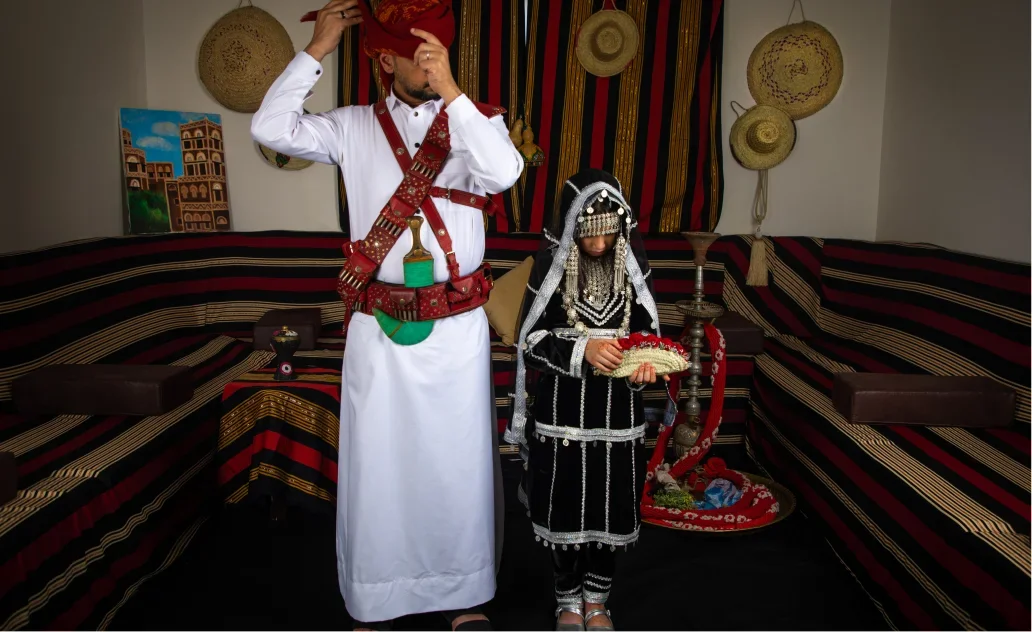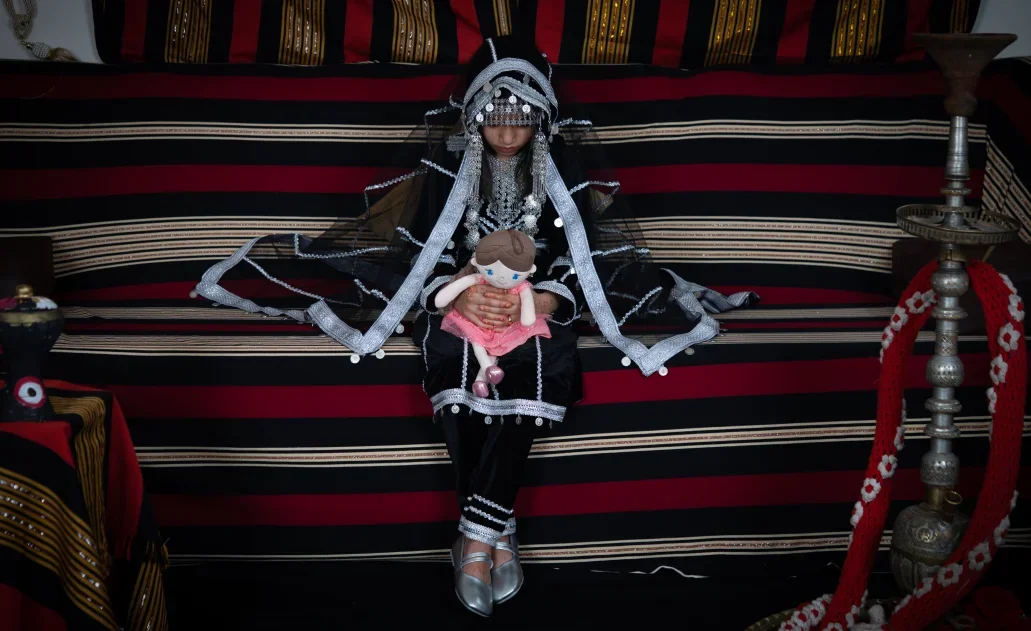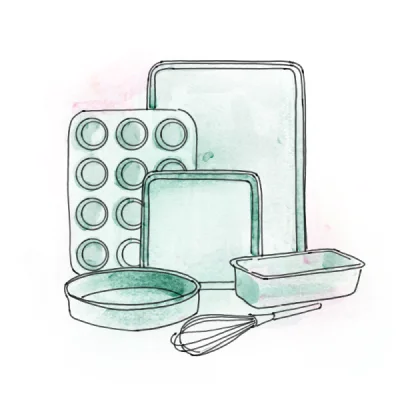

Their story
Stories of how couples meet (at school or work, through friends or family, on a dating app) and the actual proposal (over a romantic dinner on Valentine’s Day! On a beach at sunset! At the Taj Mahal!) are usually separate events.
Not so with Iman, who met her groom-to-be for 10 minutes in what was considered the “engagement” the day before the marriage was to take place.
How they met
Salim had heard that there was a man in the village willing to marry off his daughter. He and Iman’s father, Ismael, agreed on a bride price of 600,000 Yemeni rials (about $1,000) and 20 grams of gold. The following month, Salim visited Ismael’s house and met her for the first time for 10 minutes. That brief encounter was considered the “engagement.”
The very next day, Iman stayed home while Ismael and Salim went to the district centre to sign the marriage contract. Her father provided all the information, including, falsely, Iman’s age as 15 years old. Her consent was not required by the court counsellor.
At only 8, Iman didn’t understand what was happening. After the marriage contract was signed, a celebratory event was held. She wore a new dress after a hairdresser styled her hair and someone applied makeup to her face signifying she was about to become a married woman and henna on her hands in an intricate design. She was very happy because she thought she was playing dress-up, and it made her feel grown-up even as she played with the other children at her own wedding-day festivities.
Names and identifying details have been changed for privacy and protection. Photography used for representational purposes only.

Given the protracted conflict in Yemen, legal attempts to set the minimum age of marriage at 18 collapsed. Nearly two-thirds of girls in the country are married before 18 and many before 15. Girls in displaced populations are most vulnerable. Child marriage is not illegal in Yemen, and the only protection girls have is the Personal Status Law, which prohibits sexual intercourse until a girl reaches puberty. In general, police and judiciaries will act when a child marriage is reported. Anecdotal evidence from a number of health facilities in Iman’s home governorate shows an increased number of young brides experiencing physical violence and sexual abuse on their first married day. Also, more girls younger than 16 are being admitted with labour complications and for Caesarean sections. Many girls do not have birth certificates, and the customary age entered on marriage contracts is 15 or older, no matter a girl’s real age. UNFPA supports nine women’s protection shelters and 51 women and girls’s safe spaces across the country which offer psychosocial support, life skills education, livelihood training and economic empowerment opportunities.


The family
Iman, 8
THE BRIDESalim, 31
THE GROOMBRIDE’S SIDE
Ismael
THE father
After losing his job as a labourer, and no longer being able to provide for his family, he decided to marry off his daughters out of economic desperation. They rely on neighbours for food assistance.
Malika
THE mother
She does not have decision-making power and does not see other alternatives to keep her daughter safe.
Ruquia
THE OLD sister
Married off at 14 to a 25-year-old and now has two children.
Yasser
THE brother
Has mental health issues.
Amal
THE little sister
Does not attend school.
Ibrahim
THE uncle
When he tried to convince his brother not to marry off Iman, Ismael replied, “I can’t afford her, do you want her for your son?” He also asked a tribe elder for help, but child marriage in Yemen is not technically illegal.
Afaf
THE aunt
Lives in two small rooms with five children.
Groom's SIDE
Information unavailable
Timeline
Instead of a wedding weekend itinerary filled with welcome drinks, rehearsal dinners, post-ceremony receptions, after-hours dance parties and farewell breakfasts, a child bride’s timeline can hold lost opportunities, adolescent pregnancy, violence, abuse and psychological trauma. Her childhood is over.

Immediately
Girls entering child marriages or early unions tend to drop out of school. In the near term, they can become socially isolated and suffer psychosocial disorders leaving friends and family to live in a virtual stranger’s home. In the long term, without an education, economic independence is near impossible. If the marriage ends, her opportunities to earn an income and support herself – let alone any children – are limited, with poverty becoming a way of life.
too soon
Child marriage is a driver of adolescent pregnancy, as young women may not know about, have access to or be allowed by husbands and in-laws to use family planning. They are susceptible to sexually transmitted infections, and they may not be ready physically or emotionally for motherhood. Globally, one in three girls will give birth before she is 20, and pregnancy and childbirth complications are a leading cause of death of girls 15 - 19. They also might develop devastating childbirth injuries like obstetric fistula. For some, if a baby is not a boy, the mother may suffer violence by her husband and his family. Adolescent births account for 16 per cent of all births. Nearly half of first births to adolescents are to child mothers 17 and younger; 6 per cent are to child mothers 14 and younger. More than 50 per cent of additional births in adolescence happen within 23 months of the last birth.
throughout
Violence and abuse in child marriages are not uncommon at the hands of a husband, his family or both. Girls married before age 15 are an estimated 41 per cent more likely to experience intimate partner violence than women married after 18. Young women don’t feel they have recourse and often suffer in silence or worse.



A Chance at a New Life
UNFPA partner Yemeni Women Union (YWU) acted on a rumour about an 8-year-old girl getting married. The YWU reported the case to a district lawyer, who in turn appointed a legal consultant to investigate Iman’s case.
Because Iman looked significantly younger than 15 as listed on the marriage contract, the legal consultant asked the court counsellor not to release the contract until the bride’s age could be determined. Once Iman’s age was confirmed as 8 by a relative, the legal consultant filed a complaint against her father, Ismael, Salim and two witnesses, and petitioned for a divorce.
The lawyer arranged for Iman’s Aunt Afaf to care for her during divorce proceedings; she was later granted custody of Iman, Yasser and Amal. Ismael signed a letter that he would not try to marry her off again.
Iman was married on paper for two weeks. She started third grade in September.
Our Vow
Many girls aren’t rescued the way Iman was. More than 650 million women and girls around the world today were married or in informal unions before age 18. Child marriage is a human rights violation driven by poverty and gender inequality, among other factors. Impoverished families view marriage as a way to relieve themselves of a financial burden, benefit economically if commodities like livestock or money are given for their daughter’s hand or entrust their daughter’s care to a family able to provide for her. Child marriage can rise in humanitarian and fragile settings as conflict, displacement and climate disasters can decimate livelihoods and disrupt educations. While it is nearly universally banned, about 12 million girls are expected to wed each year.
Denying a girl or woman the right to decide who and when to marry carries significant and severe consequences to her health and well-being, including early pregnancy, violence, abuse and psychosocial trauma.
The UNFPA-UNICEF Global Programme to Accelerate Action to End Child Marriage works in 12 countries with high prevalence of child marriage. The programme makes efforts to work at scale and leave no one behind: In 2020, 4.1 million adolescent girls participated in life skills and comprehensive sexuality education interventions during the year; over 160,000 adolescent girls were supported to enrol and/or remain in primary or secondary school; over 6.3 million boys and men were reached with messages addressing harmful masculinities and gender norms; and 1,150 service delivery points were supported to provide girl-responsive services. Sustainable Development Goal 5 is achieving gender equality and empowering all women and girls, which includes ending the harmful practice of child marriage, by 2030.
We must accelerate progress so that girls are not robbed of their childhoods to become wives before they are ready and willing. Her wedding day should be the start of a new chapter in her life, not the beginning of a life sentence. Her marriage should be decided freely by choice, not dictated by circumstance, and should be born of love, not loss or lack. That is worth celebrating.
Gift registry
In some parts of the world, couples engaged to be married create a wedding registry (also called a bridal registry or wedding list) of requested items to simplify gift-giving for guests who wish to give them a gift. Ending child marriage by 2030 in 68 priority countries requires investments totalling $24.1 billion. In the U.S. alone, $19 billion is spent on wedding gifts each year.
Source: Loop Capital
Here are common items found on such a list and what the monetary value of each item could fund towards helping UNFPA and partners end child marriage as part of their overall programme efforts and give girls the rightful gift of freedom.












